
THE FUTURE
THE FUTURE
GLOSSARY
AI (artificial intelligence) Often used interchangeably with ‘machine learning’. The process of programming a computer to find patterns or anomalies in large data sets, or to find the mathematical relationship between some input variables and an output.
box plot Data visualization which shows the distribution, or shape, of a data set. It includes important descriptive statistics including the median, lower and upper quartiles, and any outliers. This is sometimes referred to as a ‘box and whisker plot’.
chat bot Computer program designed to interact or ‘chat’ with human users through text messaging; often used in customer service, to deal with customers’ questions and problems more efficiently than a human could.
data ethics Concerned with how data can be ethically collected, stored, analysed and distributed; especially important when handling personal data.
data legality Legislation concerned with how data can be collected, stored and accessed, and by whom.
deepfake An image, video or audio clip that has been altered using AI to show a person doing or saying something they have not done. This may include superimposing a person’s head on the body of another person in an image, or a speech track over a video of a person’s mouth moving.
genomics The study of the structure and function of DNA.
longitudinal behavioural surveys Study that takes repeated measurements from the same subjects or participants over time.
machine learning Finding a mathematical relationship between input variables and an output. This ‘learned’ relationship can then be used to output predictions, forecasts or classifications given an input.
mine information Collecting data, typically from the internet, on a large scale. Data can be mined or ‘scraped’ directly from websites. There are important ethical and privacy considerations when mining personal data.
nanotechnologies Technologies that exist at nanometre scale, and often involve the manipulation of individual molecules. This includes nanomaterials such as carbon nanotubes, and ‘buckyballs’ or Buckminsterfullerene.
self-learning Type of machine learning, commonly used to find patterns or structure in data sets. Also known as ‘unsupervised learning’.
smart Refers to internet-connected devices with real-time analysis or machine learning capabilities. Smart watches typically include physical activity monitors and internet connectivity, and smart TVs may include voice recognition.
social scoring System whereby citizens are ‘scored’ by government agencies according to their behaviour, which may include adherence to the law, financial stability, employment status or educational attainment. A person’s social score may affect their ability to access social services or loans.
stem-and-leaf display A form of data visualization, similar to a histogram, used to show the distribution or shape of a data set.
time series analysis The analysis of a signal or variable that changes over time. This can include identifying seasonal trends or patterns in the data, or forecasting future values of the variable.
topology Branch of mathematics concerned with geometric objects and their properties when they are stretched, twisted or crumpled.
PERSONALIZED MEDICINE
the 30-second data
Humans have always been interested in themselves. So it’s no surprise that they want to know what’s happening in their bodies – at all times. Consumer demand for personalized health data has fuelled the success of smart watches, fitness trackers and other wearable devices which give real-time feedback. But what does the next generation of wearables look like? And what can the data tell us? With technology so deeply ingrained in our lives, it is easy to imagine a future with technologically advanced clothing, smart skin patches or ingestible nanotechnologies which detect or monitor disease. Instead of a one-off blood test, we could all be wearing a smart patch made of a series of micro-needle sensors that continually track chemical changes under the skin. Or flexible and stretchable sensors resembling tattoos, which could monitor lactate during a workout or sense changes in environmental chemicals and pollutants. And imagine the data – huge amounts of data. Future wearable technology will collect thousands of data points a minute, maybe even a second, which will need powerful algorithms, machine learning and AI to reduce the data into meaning. This will be essential to mine the information, to better understand disease, population-wide health trends and the vital signs to predict a medical emergency.
3-SECOND SAMPLE
Wearable technology could tap in to huge amounts of human data, opening up the possibility of real-time healthcare, along with new ways to detect and prevent disease.
3-MINUTE ANALYSIS
As the line between consumer wearables and medical devices blurs, concerns are rising about the reliability and security of data. For example, current smartphone apps for melanoma skin cancer detection have a high failure rate. If people are deciding to change their lifestyle, or medical professionals are making treatment decisions, it is crucial that wearable devices go through any necessary clinical trials and are supported by strong scientific evidence.
RELATED TOPICS
See also
3-SECOND BIOGRAPHIES
JOSEPH WANG
1948–
American researcher and director of the Center for Wearable Sensors at University of California, San Diego, who is pioneering wearable sensors to monitor disease.
JEFF WILLIAMS
1963–
Apple’s chief operating officer, who oversees the Apple watch and the company’s health initiatives.
30-SECOND TEXT
Stephanie McClellan
To attain secure and reliable data, the personal healthcare industry needs to be properly regulated.
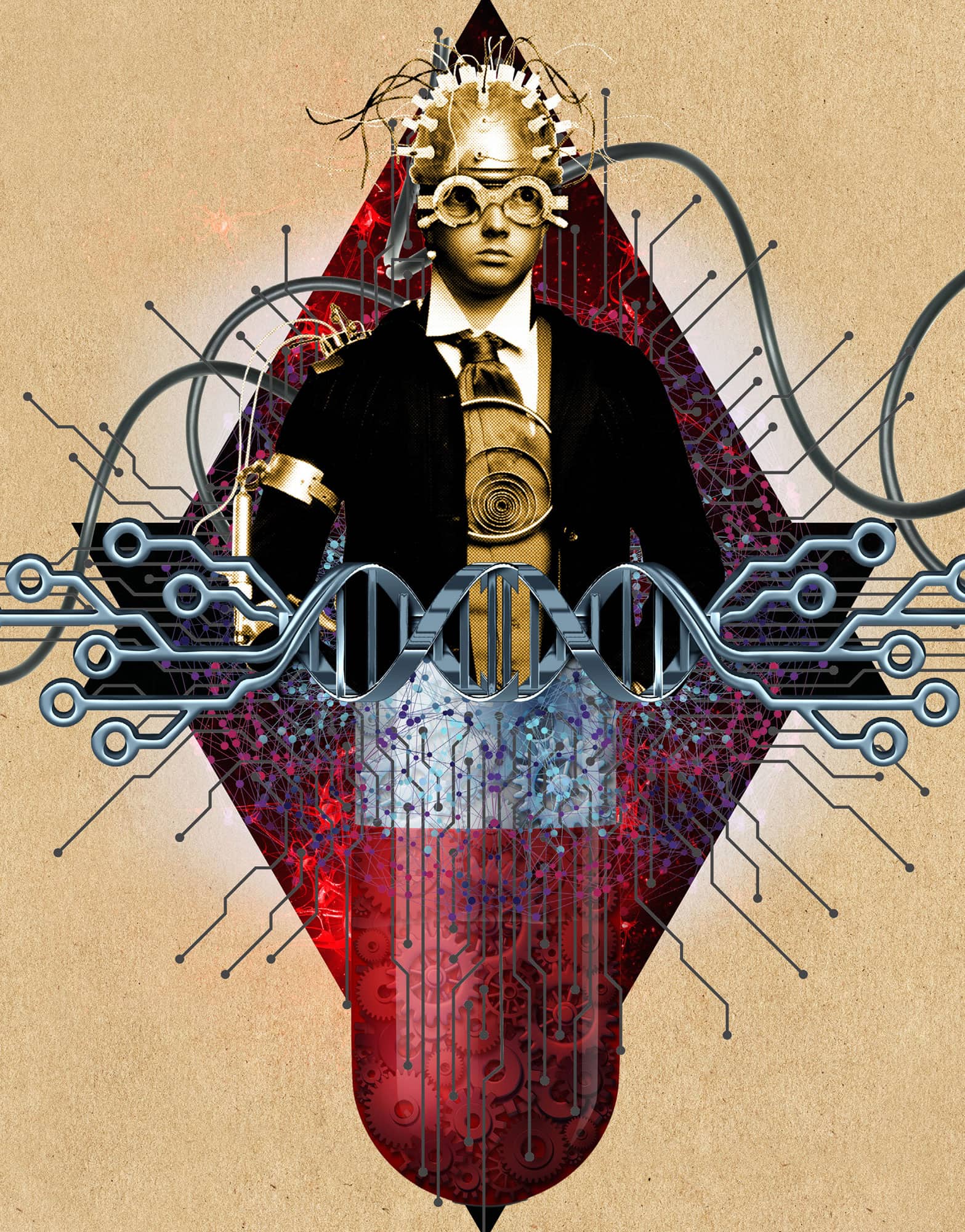
MENTAL HEALTH
the 30-second data
Mental health disorders affect over 970 million people worldwide, tend to be under-diagnosed, can have long-term effects and often carry social stigma. Mental health data involves longitudinal behavioural surveys, brain scans, administrative healthcare data and genomics research. Such data is difficult to obtain and of a sensitive nature. Data science facilitates access to this data and its applications to mental health include virtual counselling, tele-psychiatry, effective use of social media and analysing mobile health device data. Data science interfaces with mobile applications to track patient mood with visual devices such as flowcharts, produce algorithms to generate targeted advice and connect people to a therapist in order to improve symptoms of depression and anxiety, for example. Machine learning mines unstructured text from social media and similar sources to detect symptoms of mental illness, offers diagnoses and creates algorithms to predict the risk of suicide. Furthermore, AI can combine brain scans and neural networks to deliver personalized psychiatric medicine. However, preserving confidentiality of personal information, maintaining data security and transparency with the use of data are key.
3-SECOND SAMPLE
Data science enables digital mental healthcare, to improve access and treatment outcomes.
3-MINUTE ANALYSIS
Mental healthcare has been made more accessible to overcome provider shortages and stigma via tele-psychiatry and virtual agents. A 3D chat bot named Ellie has the capability to show facial expressions and detect non-verbal cues. Patients’ verbal input and facial expressions run through algorithms, which determine Ellie’s visual and verbal responses. In a study, Ellie was more effective in diagnosing post-traumatic stress disorder among military personnel during routine health exams. The ability to build rapport and trust with patients drives Ellie’s effectiveness.
RELATED TOPICS
See also
NEURAL NETWORKS & DEEP LEARNING
3-SECOND BIOGRAPHIES
EMIL KRAEPELIN
1856–1926
Used data science concepts in his diagnosis methods for schizophrenia and bipolar.
AARON BECK
1921–
Created the Beck Depression Inventory, used to diagnose depression.
30-SECOND TEXT
Rupa R. Patel
The application of data science to mental health carries important ethical considerations.
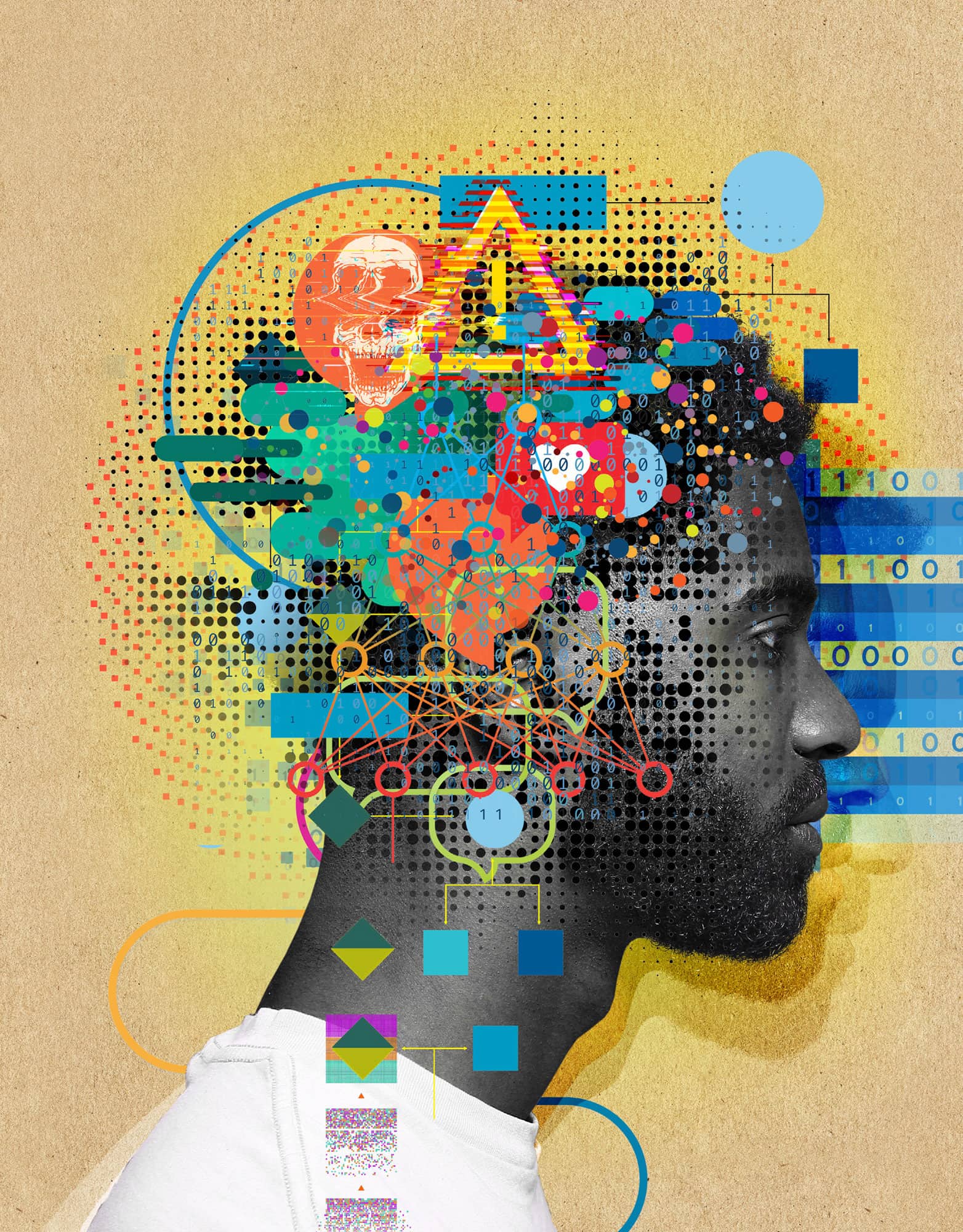
SMART HOMES
the 30-second data
Our homes are growing smarter, from turning the lights on, to playing a song or even ordering a pizza, devices that have become part of the furniture of the modern home can now do it all. Actions that were fully manual are controlled via a variety of methods, be it by phone or smart speaker, so the central heating can be turned on at the touch of a button or the sound of a voice. The more smart devices are used in the home, the more data they emit and the more information that becomes available to collect. The volume of data lends itself well to applying machine learning and AI techniques. In the case of smart speakers, for example, once you’ve asked for something, it is sent over the internet to be processed by a voice-processing service, which does all the hard work. The more data the speaker receives, the better it becomes at processing a request. This means that a smart home should grow increasingly smarter. One worry is how they learn: major companies have had to apologize for employing people to listen in to conversations in private homes with the alleged aim to improve voice recognition – valid concerns over privacy loom.
3-SECOND SAMPLE
Machine learning and AI have now taken the average home and turned it into a smart home.
3-MINUTE ANALYSIS
Smart speakers now use self-learning technology, which means that they can learn from the errors they make. So if you ask for something that the speaker doesn’t understand and then ask again in a different way, it can learn that the first request is related to the second, combine the two and learn from them both.
RELATED TOPICS
See also
3-SECOND BIOGRAPHIES
WILLIAM C. DERSCH
fl. 1960s
Creator of IBM’s Shoebox, the first known voice assistant.
ROHIT PRASAD & TONI REID
fl. 2013–
Creators of the Alexa assistant and AI specialists at Amazon.
30-SECOND TEXT
Robert Mastrodomenico
‘Smart’ stands for Self-Monitoring Analysis and Reporting Technology, and such devices link to the Internet of things.

TRUSTWORTHINESS SCORE
the 30-second data
The idea of being judged in society based on your behaviour is not new, but the data age is giving it all new possibilities and meaning. China is the first to take advantage of this on a population scale, by giving each of its citizens a social credit score, which can move up or down, based upon AI and data collection techniques of each individual’s behaviour. The methodology of the score is a secret, but examples of infractions are bad driving (captured by China’s extensive camera systems), buying too many video games and posting deemed ‘fake news’ online. The result? A low score will be punishable by actions such as travel bans, not allowing your child into certain schools, stopping you from getting the best jobs or staying at the best hotels, slowing of your internet and, at its most base level, a loss of social status (including publishing your score with your online dating profile). Other countries and companies are on the brink of using systems very similar to this. The UK, for example, has been accused of getting quite close with the usage of data from sources such as credit scores, phone usage and even rent payments to filter access to many social services and jobs.
3-SECOND SAMPLE
Yell at someone in traffic who cuts in front of you? Your social credit score might go down: a data- driven score based on individual behaviour (a black box of lifestyle traits).
3-MINUTE ANALYSIS
Companies are not immune to interest in a social score. Facebook reportedly assigns all of its users a trustworthiness score, with the intention to combat the spread of misinformation. In this case, the score itself and how it is computed are a complete secret. In 2016, the online profiles of over 70,000 OKCupid users (including usernames, political interest, drug usage and sexual exploits) were scraped and published by academic researchers.
RELATED TOPICS
See also
3-SECOND BIOGRAPHY
EARL JUDSON ISAAC
1921–83
Mathematician who, along with Bill Fair, founded a standardized, impartial credit scoring system.
30-SECOND TEXT
Liberty Vittert
The amount of public and private data on individuals is endless, so where will our social scoring end?
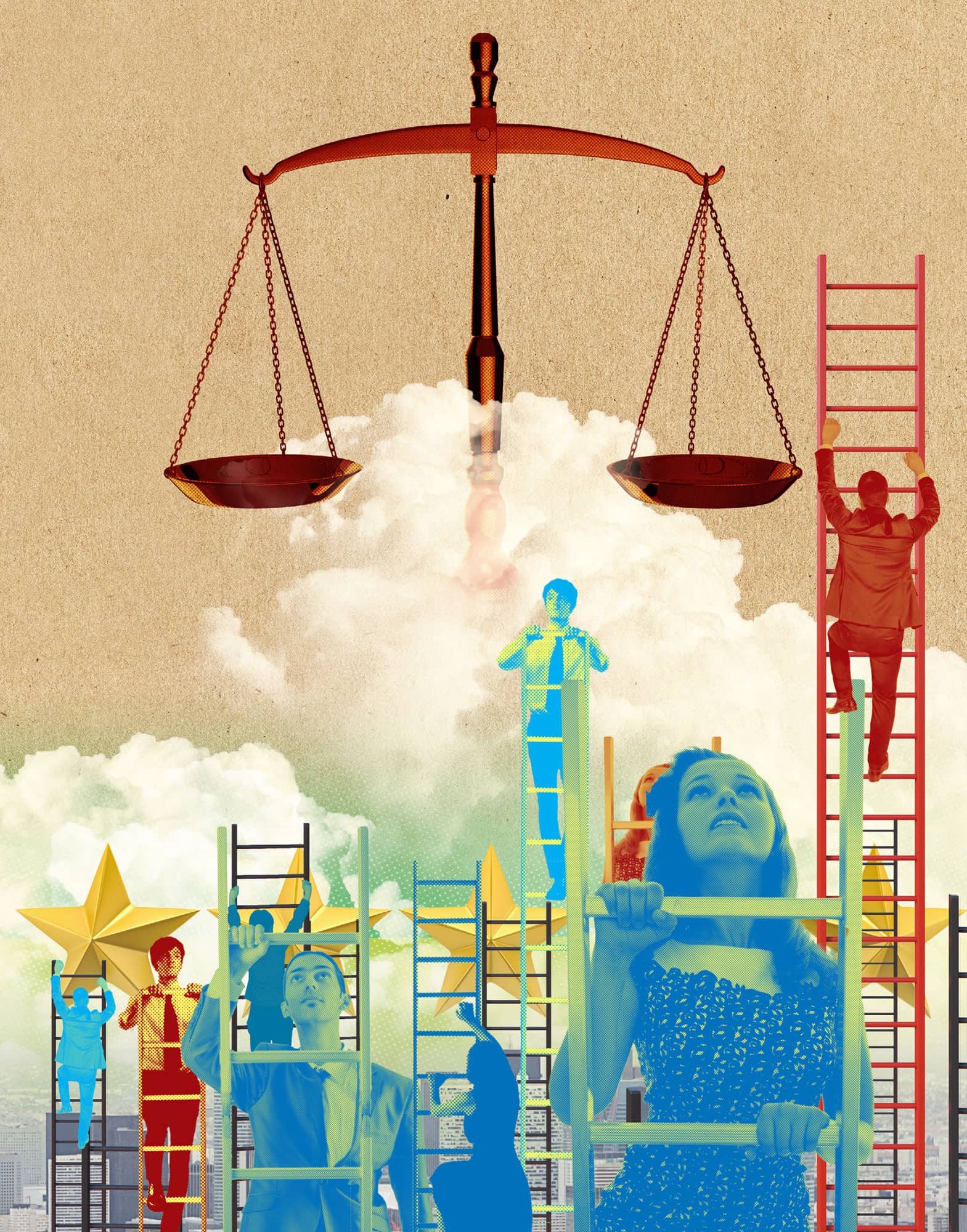
ARTIFICIAL INTELLIGENCE (AI)
the 30-second data
Artificial Intelligence is less about sentient robots and more about computers that can find patterns and make predictions using data. You encounter AI every time your phone autocompletes your messages, whenever you use a voice recognition service or when your bank catches a fraudulent transaction on your credit card. On many social media platforms, facial recognition technology uses AI to establish whether an uploaded image contains a face, and to identify the subject by matching against a database of images. At airports, this same technology is increasingly used to identify travellers and perform passport checks. However, facial recognition algorithms are notorious for performing poorly on darker skinned faces, so a technology that saves time at passport control for one person could misidentify another traveller as a wanted criminal. As well as performing image recognition tasks, AI can be used to generate hyper-realistic images of faces or landscapes. This has benefitted the computer graphics and video game industries, but has also enabled the rise of the ‘deepfake’, an image or video in which a person is shown doing or saying something they haven’t done. As deepfakes become ever more convincing, governments and news outlets must find ways to combat this new form of misinformation.
3-SECOND SAMPLE
It sounds like the stuff of science fiction, but AI is already being used to power apps and services in use every day.
3-MINUTE ANALYSIS
The full impact of AI on the labour market is unknown, and advances such as driverless cars may lead to unemployment or a need to re-skill. However, many automated systems will always require a degree of human oversight or interpretation, particularly in sensitive fields such as medicine or criminal justice.
RELATED TOPICS
See also
3-SECOND BIOGRAPHY
ALAN TURING
1912–54
British mathematician and computer scientist, widely considered the father of AI.
30-SECOND TEXT
Maryam Ahmed
Facial recognition is one of the most widespread uses of AI in everyday life.
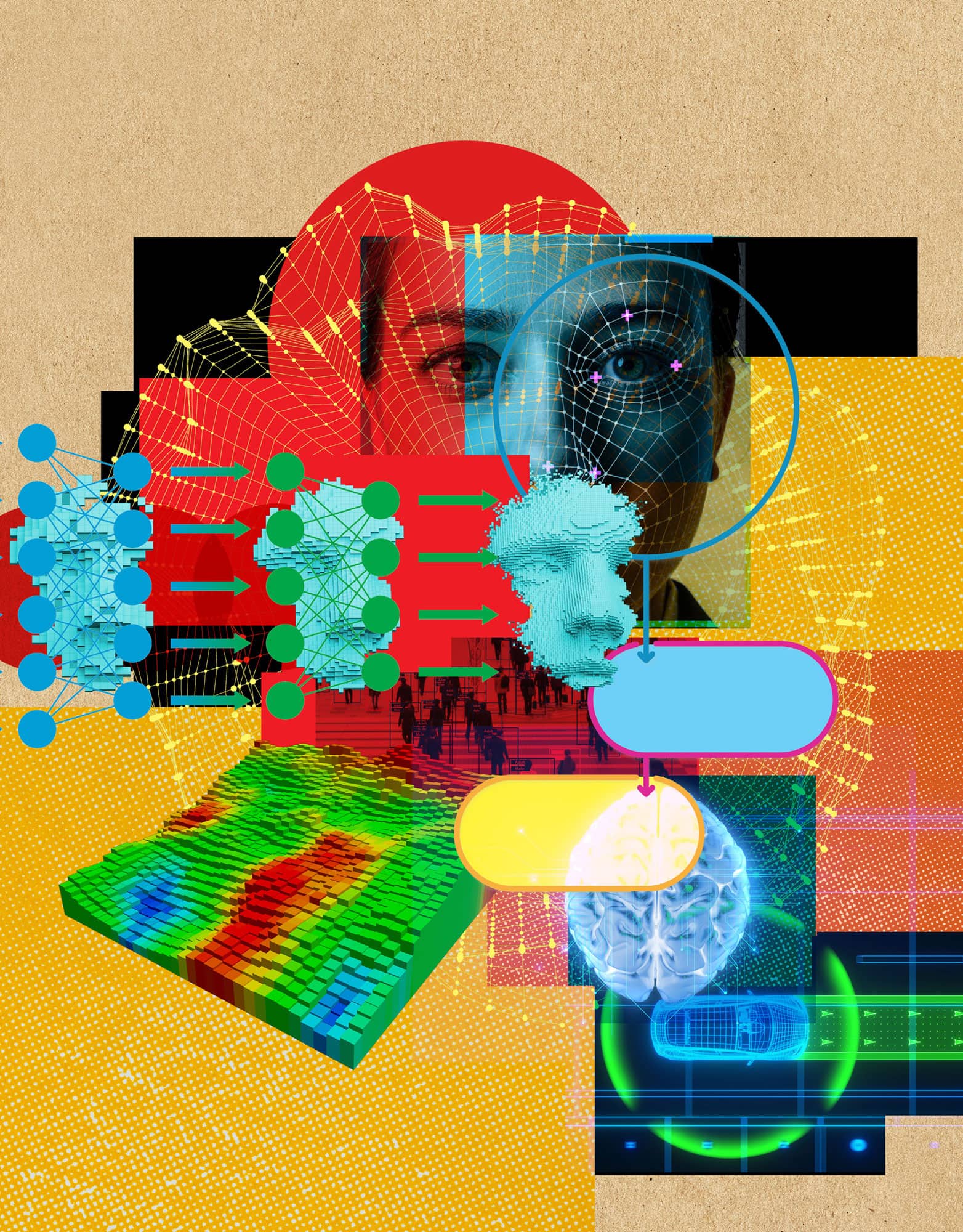
REGULATION
the 30-second data
Advances in data science are raising new questions that have politicians and legislators scratching their heads. How can personal data be collected and stored ethically and securely? Who should check whether algorithms are biased? And whose fault is it when the irresponsible use of data causes real-life harm? In Europe, the General Data Protection Regulation (GDPR) gives citizens control over their data; organizations must ask for permission to collect personal data, in simple language rather than legal-speak, and delete it when asked. The European Commission recommends that AI should be transparent and unbiased with human supervision if needed, and in the US the Algorithmic Accountability Act will soon require that AI systems are ethical and non-discriminatory. In the wake of high-profile data privacy scandals at Facebook and DeepMind, some companies have made efforts to self-regulate, with varying success. Microsoft and IBM have publicly committed to building fair and accountable algorithms, with data privacy and security as key concerns. Meanwhile, Google has explicitly pledged not to develop algorithms for weapons systems, or technologies that contravene human rights, although its AI ethics board was dissolved just one week after being founded, due to board member controversies.
3-SECOND SAMPLE
Technology is evolving too fast for lawmakers to keep up with, so who should be responsible for regulating the use of data science and AI?
3-MINUTE ANALYSIS
NGOs can hold algorithms to account and effect change where governments fail. The Algorithmic Justice League in the US has exposed racial and gender biases in IBM and Microsoft’s face recognition systems, and in the UK, Big Brother Watch has found low accuracy rates in face recognition algorithms used by some police forces. Algorithm Watch has investigated an opaque credit scoring algorithm in Germany, demonstrating that some demographic groups are unfairly penalized.
RELATED TOPICS
See also
IBM’S WATSON & GOOGLE’S DEEPMIND
3-SECOND BIOGRAPHY
CORY BOOKER
1969–
US Senator (Democrat) and sponsor of the Algorithmic Accountability Act.
30-SECOND TEXT
Maryam Ahmed
The main challenge for data regulators is to keep up with the fast pace of technological developments.
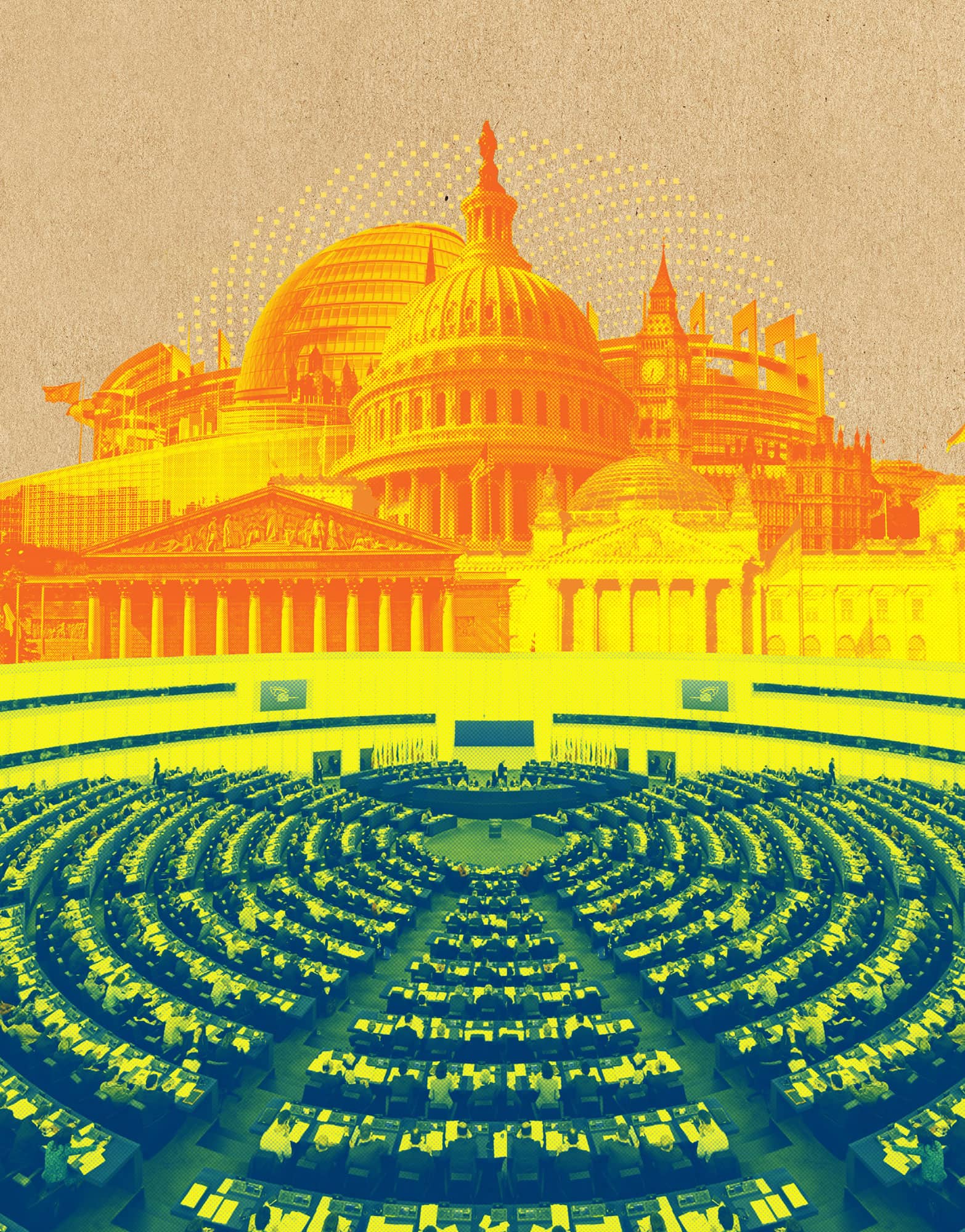
ETHICS
the 30-second data
Data is the new oil, except it isn’t the earth that is being excavated – it’s you. Your data is being used as a commodity. It is being bought, sold and potentially stolen, from the Weather Channel selling your geo-located data, to political advertising companies matching voter registration records to Facebook profiles, companies sorting through CVs based upon algorithmic functions, or insurance companies selling your private medical information to third parties to contact you about ‘further treatment’. With this new industry comes overwhelming ethical concerns. Both the private and public sector, behind closed doors, must make very difficult ethical decisions about what they can and cannot do with your data. These questions arise not only in the pursuit of making money, but also in an effort to mitigate and solve serious problems. For example, should Apple, or other electronic/technology companies, give the government access to the data on the mobile phone of an alleged terrorist? Data ethics encompasses the collection, analysis and dissemination of data (including who owns it), as well as any associated algorithmic processes and AI. Professional statistical bodies and companies alike have tried to convene thought groups on the many quandaries surrounding data ethics.
3-SECOND SAMPLE
Data ethics seems antithetical: 2+2=4, what can be unethical about that? But the saying, ‘figures never lie, but liars always figure’ isn’t really that true.
3-MINUTE ANALYSIS
From the leaks by Edward Snowden to the extent that companies have an ethical or legal responsibility to inform users of how their data will be used, the conflation of data ethics versus data legality is a complicated issue. In the Cambridge Analytica scandal, while their business practice was questionable, thousands, if not tens of thousands, of other app developers were using the features that Facebook itself created, to do precisely the same thing that Cambridge Analytica was doing. What is ethical and which is the responsible party?
RELATED TOPICS
See also
3-SECOND BIOGRAPHIES
RUFUS POLLOCK
1980–
Founder of the Open Knowledge Foundation, which promotes and shares open data and content.
EDWARD SNOWDEN
1983–
American whistle-blower of classified National Security Agency information.
30-SECOND TEXT
Liberty Vittert
Data ethics is an ever-changing discipline based upon current practices.
